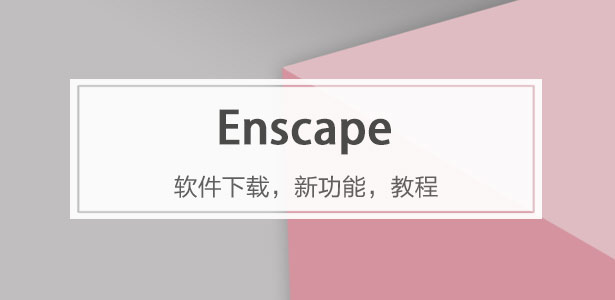* 主體類型
* 企業名稱
* 信用代碼
* 所在行業
* 企業規模
* 所在職位
* 姓名
* 所在行業
* 學歷
* 工作性質
請先選擇行業
您還可以選擇以下福利:
行業福利,領完即止!

下載app免費領取會員



©存在建筑
伊甸島的輪廓無限接近于一個愛心符號,一眼望去,很難不讓人聯想到與愛情相關的字眼。問DeepSeek如何理解愛情,它答:“當我們談論愛情時,其實是在談論自己——我們的渴望、恐懼,以及與他人建立聯結的永恒努力。”這顆搖蕩在成都麓湖之上的愛心亦然,身處麓湖水城的核心區域,向麓湖的四面八方用力一擲,橋與路便如動脈一般,鏈接起麓坊中心、海浪公園、麓客島等其他社區組團。
The contour of Edenland in Chengdu's LUXELAKES so closely approximates the symbolic heart shape that, at first glance, it inevitably evokes associations with love-related terms. When asked how DeepSeek interprets love, it posits: "To speak of love is ultimately to speak of ourselves — our yearnings, fears, and the perpetual endeavor to forge connections for others." The heart-shaped island floating above Chengdu's LUXELAKES is also creating a form of connection. Situated at the core area of Chengdu's LUXELAKES, it extends its bridges and roads radially across the aquatic expanse. Like arterial networks, it connects key community clusters such as Luxezone ,WaveBox Park and LuxeIsland.

△ 愛心輪廓的麓湖伊甸島 ©賈科
兩條動脈作為小島的核心軸線,貫穿愛心,東南與西北向一條,南北向一條。南北向軸線略顯蜿蜒,實際上是麓湖園區路的延伸,涵洞下沉進入島心,對建筑位置與荷載要求更為嚴格。在如此條件下,我們在這顆愛心上建了三個房子,假裝為“心房”,借空間催化相聚,將抽象的聯結轉譯為具體的在場。
An axis running southeast to northwest and an axis running north to south seem to act as two "arteries" that penetrate the small island. The north-south axis is slightly winding; in fact, it is an extension of the LUXELAKES’internal road, with culverts sinking into the island's central area, imposing stricter requirements on building location and load capacity. Under such conditions, we have built three structures on this heart-shaped island, designed as 'atria'. Through spatial intervention, we aim to catalyze gatherings and translate abstract connections into a tangible presence.

△ 貫穿”愛心“的軸線與建筑 ©大料建筑
心房與心房不同,儀式追求、社交需要、口腹之欲三足鼎立,難分難舍。禮堂背抵西北,面朝東南,重合于東南與西北走向軸線之上,與橋體重疊出浪漫的想象,“一箭穿心”。餐廳和水吧在島上的東西兩處,各占一頭,中間隔著三百步碧茵。
Each building serves distinct functions: specifically ceremonial pursuits, social needs, and gustatory desires. The auditorium, with its back to the northwest and its face to the southeast, is positioned along the southeast-northwest axis. It overlaps with the bridge to evoke romantic imagery, like Cupid's arrow piercing the heart. The restaurant and water bar are situated on the eastern and western extremities of the island, each occupying one end, separated by a lawn expanse spanning approximately a hundred paces.

△ 島上建筑布局 ©賈科

△ 麓湖伊甸島建筑鳥瞰 ©存在建筑

△ “一箭穿心” ©成都萬華
禮堂建筑位于兩條軸線的交叉點,與水吧結合布置。巨大的橢圓形向下彎折,沿中線折成兩片,搭出三角空間,空間平面近似梯形,西窄東寬。銀白色屋面化作羽翼,體量壓迫感被削弱,整體更加輕盈,近乎失重,不穩定的態勢若有似無。
The auditorium building is located at the intersection of two axes and is combined with the water bar. By bending a large ellipse downward and folding it into two pieces along the median line, a triangular space is formed, with the spatial plane approximating a trapezoid, narrow in the west and wide in the east. The silver-white roof resembles wings, reducing the sense of massiveness and oppression; the building's volume of oppression is weakened, making the structure as a whole lighter, almost weightless, with a subtle sense of instability.

△ 麓湖伊甸島禮堂 ©存在建筑

△ 位于兩條軸線交叉點的禮堂 ©朱雨蒙
禮堂西側屋面更加圓潤,卻直向碧落,晚風經過時,制造出低音哨響。這種向上的勢能并非宗教隱喻,而是暗合水吧逐漸熱鬧的私語聲浪,將儀式氛圍推向高潮,推向頭頂的蔚藍色劇場。
The roof on the west side of the auditorium adopts a more rounded profile, overall upward and pointing skyward, creating a bass whistle whenever the evening breeze caresses it. This upward momentum is not a religious metaphor but instead subtly resonates with the gradually intensifying buzz of murmured private conversations in the water bar, propelling the ritual atmosphere toward its climax and upward into the sky.

△ 銀白色屋面圓潤且向上 ©大料建筑
禮堂西立面被半透玻璃磚砌成玻璃矩陣,每每夕陽穿過,像素化天光鋪滿儀式空間,發梢與誓言皆鍍上金箔。這場共游人間的邀請,因著光影的投射,儀式不再是單向展演,而是請見證者作為光的導體,參與更多相逢。至此,禮堂主動消解觀禮的儀式距離,將觀看轉化為在場,聯結每場因緣際會。
The western façade of the auditorium is constructed with semi-transparent glass bricks arranged in a pixelated grid. As the setting sun penetrates this luminous matrix, fragmented hues of the sky cascade into the ceremonial space, gilding both the guests' hair tips and the newlyweds' vows with golden light. This invitation for guests to share in the newlyweds' journey through life's pivotal moments—as the interplay of light and shadow redefines the ritual's essence—transforms the ceremony from a one-way show into a collective reunion where participants bear witness. Thus, the auditorium has taken the initiative to dissolve the ritual distance of observation, transforming the act of watching into a state of presence, and connecting every encounter brought about by karmic coincidence.

△ 夕陽穿過西立面玻璃磚 ©因澈景觀

△ 夕陽穿過西立面玻璃磚 ©因澈景觀
禮堂東側向中心草坪徹底敞開。儀式時,這里處處呼應預設的建筑功能。儀式之外,禮堂同樣包容來客,成為無數偶然的交匯場。成都人民的張弛之道在此一覽無余,他們三兩成群,復雜釀造工藝的精釀啤酒擺在腳邊,手里舉著建設路小吃攤上的鹵耙雞爪,保留著拒絕被標簽化的社會默契。
The east side of the auditorium is completely open to the central lawn. During ceremonies, every detail resonates with the pre-designed architectural functions. Beyond these occasions, the auditorium equally embraces visitors, serving as a meeting place for countless chance encounters. The art of balance in Chengdu people is vividly on display here, where groups of two or three gather with craft beer of complex brewing process at their feet, yet hold up Sichuan specialty snacks bought at Jianshe Road food stalls in their hands, retaining the tacit social understanding of refusing to be labeled.

△ 儀式之外的禮堂 ©存在建筑

△ 禮堂隱于植被間 ©因澈景觀
水吧是禮堂的倒影,顯形為更直白的聯結關系。沿禮堂南側草坡向下,可直達島西,水吧便伏臥于此。弧形建筑的空間重心被壓低,薄如船帆一片。
The water bar is a reflection of the auditorium, manifesting as a more straightforward connection. Down the grassy slope on the south side of the auditorium, you can reach the west side of the island, where the water bar lies. The spatial center of gravity of the curved building is lowered, its thin profile resembling a sail.

△ 水吧與禮堂結合 ©存在建筑

△ 水吧夜景 ©存在建筑
懸挑屋面下的灰空間作為外擺區,木質鋪裝平臺與沙灘、泳池構成連續的空間界面。三五把休閑陽傘,幾帆槳板,此刻的水吧化為通透器皿,是對空間敘事最生動的注釋。它盛放著成都特有的慵懶恬淡,將野心消解。不遠處,有人正躍進泳池,水花濺起笑鬧聲,完成了更爆裂的生長。
The gray space beneath the cantilevered roof serves as the outdoor seating area of the water bar, with the wooden deck, beach, and pool forming a continuous spatial interface. With several leisure beach umbrellas and a few paddleboards, the water bar at this moment seems to be a transparent vessel, containing Chengdu's unique leisure and tranquility, dissolving ambitions. It is the most vivid commentary on spatial narrative. Not far from the water bar, someone was leaping into the pool, splashing, laughing, and completing a more explosive growth.

△ 外擺與沙灘、泳池形成連續界面 ©存在建筑

△ 外擺與沙灘、泳池形成連續界面 ©因澈景觀

△ 水吧室內設計方案 ©大料建筑

△ 麓湖與水吧 ©存在建筑
餐廳位于伊甸島東側,雙層建筑依托地形嵌入山坡,層疊輪廓與等高線達成共識。建筑狹長,體量被刻意壓縮得更薄,以此構建空間的微妙張力——每張餐桌均臨近窗口,食客視線穿透對側窗口,視野滲透進更寬廣的場域。與此同時,落地窗消解室內外邊界,通透界面提示視覺冒險。室外,靠近湖岸一側預留外擺空間,金屬穿孔板廊架會將蜀地的灼熱過濾,為到訪至此的客人提供陰涼。
The restaurant is situated on the eastern side of Edenland, with its two-story structure seamlessly integrated into the hillside, its cascading profile aligning harmoniously with the contour lines. The building is long and narrow, and the volume has been deliberately compressed to make it thinner. This design creates a subtle tension in the space: each table is positioned close to the window, allowing diners' lines of sight to penetrate the opposite window and extend their views into a broader area. Meanwhile, floor-to-ceiling windows dissolve the boundaries between indoors and outdoors, while the permeable interface invites a visual adventure. Outside, outdoor space is reserved near the lakeside for al fresco seating. The perforated-metal-paneled porch filters out Sichuan’s scorching heat, providing shade for visitors.

△ 麓湖伊甸島東岸的餐廳 ©存在建筑

△ 建筑體量輕薄狹長 ©存在建筑

△ 餐廳嵌入山坡 ©存在建筑

△ 視線穿透對側窗口 ©大料建筑

△ 視線穿透對側窗口 ©大料建筑

△ 沿湖外擺空間 ©成都萬華

△ 餐廳金屬穿孔廊架 ©存在建筑

△ 餐廳金屬穿孔廊架 ©大料建筑

△ 餐廳平面布置 ©大料建筑
而分叉的空芯立柱是空間真正的敘事者。它們在室內以3米模數切割空間秩序,每個柱跨半圍合出一個“無邊界包廂”,創造島嶼般的社交灰度——既非完全暴露,亦非徹底隔絕。每個“島”僅可容納一張餐桌,使每組餐位獨立于其他喧響。若干“島嶼”集結于此,在空氣中形成復調,一如成都本身雜糅的敘事層次。
And the bifurcated hollow-core columns are the true narrators of the space. Inside, they segment the spatial order by means of a 3-meter module, with each column span half-enclosing a "borderless booth," creating an island-like social privacy gradient—neither fully exposed nor completely isolated. Each "island" accommodates only one dining table, ensuring the independence of each group’s seating. A series of these "islands" are assembled here, mirroring the intricate layers of narratives that Chengdu itself embodies.

△ 分叉空心立柱施工 ©大料建筑

△ 分叉空心立柱 ©大料建筑

△ 分叉空心立柱 ©大料建筑

△ 柱跨圍合“無邊界包廂”方案 ©大料建筑

△ 餐廳室內設計方案 ©大料建筑

△ 餐廳室內設計方案 ©大料建筑
當伊甸島成為聯結的介質,我們希望借通透紓解疏離,用交疊抵抗割裂,讓物理的迫近催化心理的共振。那些被空間預設的相遇,將個體敘事編織為公共記憶,人們帶著各自的記憶前來,卻在此窺見他人的倒影。玻璃磚折射的疊影、木質鋪裝傳遞的體溫、分叉柱間隙的注視,都在不動聲色地解析:與他人建立聯結,即借他者之鏡完成一場自我辨認。
When Edenland becomes a spatial connector, we aim to employ transparent sightlines to alleviate social alienation, interwoven circulation paths to counteract fragmentation, and physical proximity to catalyze psychological resonance. Those encounters preset by the space weave inpidual narratives into public memories, where people arrive there with their own memories yet glimpse reflections of others. The overlapping refractions from glass bricks, the subtle warmth transmitted by the wooden paving, and the fleeting gaze captured within the interstices of bifurcated columns—these elements quietly unrave the proposition that establishing connections with others is a form of self-recognition through the mirror of alterity.

△ 麓湖伊甸島夜景 ©存在建筑

△ 麓湖伊甸島 ©因澈景觀

△ 麓湖伊甸島 ©存在建筑
項目圖紙

△ 總平面圖 ©大料建筑

△ 一層平面圖 ©大料建筑

△ 二層平面圖 ©大料建筑

△ 禮堂立面圖&剖面圖 ©大料建筑

△ 餐廳立面圖&剖面圖 ©大料建筑
位置:四川,成都
時間:2022 -2024
面積:禮堂&水吧 343㎡ 售票廳14㎡ 餐廳594㎡
業主:成都萬華投資集團有限公司
建筑/室內:大料建筑
主持建筑師:劉陽
建筑師:孫欣曄 蔡卓群 丁月文 史維維
施工圖設計:洲宇設計集團
景觀設計:因澈景觀
燈光設計:Artluci(阿特露祺照明設計)
攝影:存在建筑,朱雨蒙,賈科,成都萬華投資集團,因澈景觀,大料建筑
Location: Chengdu, Sichuan, China
Design period: 2022-2024
Area: Auditorium&Water Bar 343㎡; Ticket office 14㎡; Restaurant 594㎡
Clien: Chengdu Wide Horizon Investment Group
Architecture/Interior: DL Atelier(Liu Yang, Sun Xinye, Cai Zhuoqun, Ding Yuewen, Shi Weiwei)
Construction drawing: ZHOYU Technology Group Co., Ltd.
Landscape Design: INTERESTING
Lighting Design: Artluci
Photography: Arch-Exist; Zhu Yumeng; Jia Ke; Wide Horizon Group; INTERESTING;DL Atelier
來源:本文由大料建筑提供稿件,所有著作權歸屬大料建筑所有。
本文版權歸腿腿教學網及原創作者所有,未經授權,謝絕轉載。

上一篇:政策新聞 | 法律援助投訴處理辦法,自2025年6月15日起施行
下一篇:BIM建筑|2025年AIA“全球十大建筑”揭曉,上海天文館位列其中
猜你喜歡

BIM建筑|長春凈月中央公園 / 水石設計

BIM建筑|紹興天地:芯片廠變身城市商業客廳 / Kokaistudios + AICO

BIM建筑|深圳灣超級總部基地20圖:從渲染到實景

BIM建筑|經典再讀222 | 鹿特丹當代美術館:非常OMA

BIM建筑|競賽結果+一等獎方案發布|AUBE歐博設計,紅樹灣學校項目

BIM建筑|中建西南院新作:成都漂浮公園,一座橋一處園
最新課程
推薦專題



































